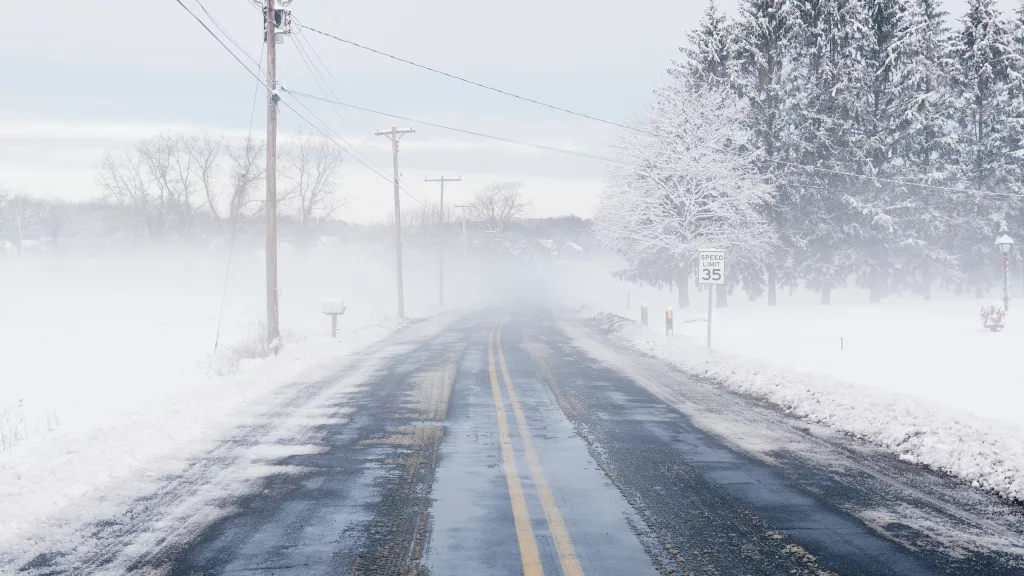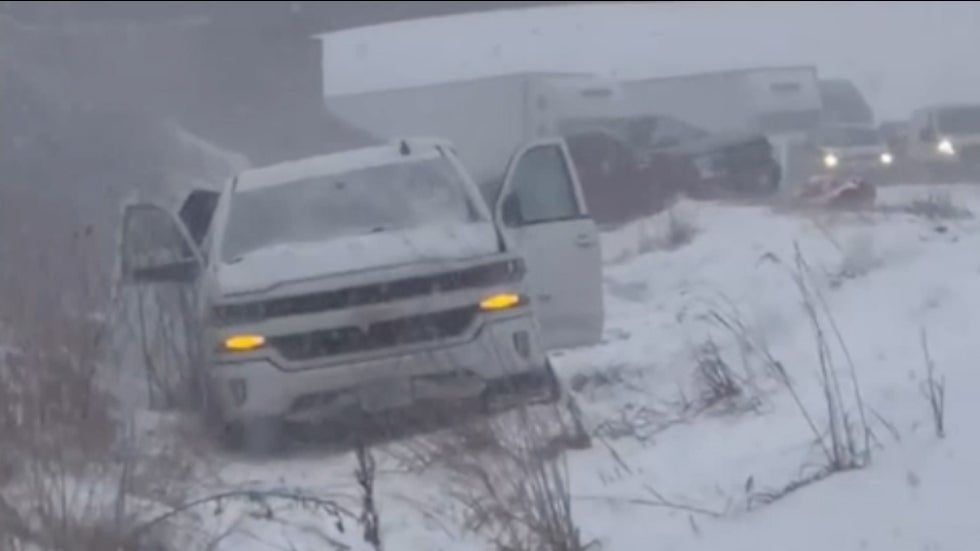If you’re in Illinois today, you might want to rethink your morning commute. Freezing rain and icy conditions have turned highways into skating rinks, causing multiple accidents and major delays. The National Weather Service has issued a Winter Weather Advisory, urging everyone to stay off the roads unless it’s necessary.
Weather Forecast
It all started Wednesday evening when a freezing drizzle began coating everything from car windshields to roadways. By nightfall, the region was an icy mess. In the blink of an eye, normal commutes became dangerous journeys, with spinouts and crashes reported all over the state. One of the worst incidents occurred on westbound I-88 near DeKalb, where multiple crashes shut down a stretch of the highway. Emergency responders spent hours clearing the scene and helping stranded drivers get back on their way. And it wasn’t just I-88 that saw trouble. Roads that seemed safe at first glance turned out to be deceivingly slick, especially on bridges and overpasses where ice forms faster. Even experienced drivers found themselves sliding, and pedestrians had their own challenges, slipping on untreated sidewalks and driveways.
Who’s Affected by the Weather Advisory?
This isn’t just a problem for a few towns—it’s a widespread issue. The advisory covers major counties like Cook, DuPage, Kane, Kendall, McHenry, and Will, as well as parts of northwest Indiana. It kicked in at 6 p.m. Wednesday and remains active until 6 a.m. Thursday. Forecasters say the freezing rain and drizzle will continue through the night, and even a small amount of ice (up to one-tenth of an inch) can spell disaster on the roads. That thin, invisible layer can reduce traction to almost nothing, making it nearly impossible to stop or turn without skidding.

What Happens Next?
The silver lining? Temperatures are expected to climb to around 40°F (4°C) by late morning, which should help melt most of the ice. But until then, early risers should expect icy roads, slow commutes, and the possibility of delays. Even once the ice starts to melt, drivers should be cautious—melted water could refreeze on untreated surfaces if temperatures dip again.
How to Stay Safe on the Roads
If you can stay home, do it. But if you have to head out, here are some tips to help you navigate the ice safely:
- Drive slowly and keep your distance: Sudden stops or turns on icy roads are a recipe for disaster. Leave plenty of space between your car and the one ahead.
- Watch for black ice: It’s called black ice for a reason—you won’t see it until you’re already on it. Be extra careful on bridges and overpasses, which freeze first.
- Keep an emergency kit in your car: You never know when you might get stuck, so pack blankets, snacks, water, and a flashlight, just in case.
- Check road conditions before you leave: The Illinois Department of Transportation (IDOT) provides real-time updates through its “Getting Around Illinois” website.
IDOT crews have been working overnight to salt and clear major roadways, but it takes time to cover all areas. Even if a road looks clear, it could still be slick, so proceed with caution. By midday, most of the ice should be gone, but that doesn’t mean you’re in the clear. If temperatures dip overnight, refreezing could create more hazards. This unexpected icy blast is a reminder of just how unpredictable winter in Illinois can be. Stay safe, stay warm, and don’t let the road conditions catch you off guard.

